 Demeter-Ceres, Greco-Roman marble statue, State Hermitage Museum Demeter-Ceres, Greco-Roman marble statue, State Hermitage Museum Demeter is the daughter of the titans Kronos and Rhea, and sister to the Olympian deities. The name Demeter comes from de, which is a derivative of the Cretan word dêai, meaning barley, and the word meter which means mother. De could also come from the Greek word da which means earth. Whichever etymology you choose to believe, it means the same thing. Demeter is the earth mother. In the Roman pantheon, she is called Ceres, which gives us the word cereal. She is the goddess of grain and barley. Demeter’s influence was not limited to just grain, but extended to vegetation and fruits in general, and thus fertility. Women, especially, revere Demeter for her attributes of health, birth, and marriage. Demeter taught mankind about agriculture. Through agriculture, cities were created. With cities came law and order. Because of this, she was also thought to be a goddess of justice.  Demeter in Neustrelitz by Ruchhöft-Plau Demeter in Neustrelitz by Ruchhöft-Plau As a mother goddess, Demeter is usually depicted as a mature woman with a chaplet of corn bearing a cornucopia and a torch. Her festivals take place during the harvest season and the first corn was always given to her as an offering. Her symbol is the bright red poppy, which commonly grows among the wheat fields. To ensure the fertility of the crops, pigs were often sacrificed to the goddess. Animals that are sacred to Demeter are pigs, serpents or geckos, and bees.  Frederic Leighton - The Return of Perspephone (1891) Frederic Leighton - The Return of Perspephone (1891) Perhaps the most well-known story surrounding Demeter is the abduction of Persephone by Hades. In short, Hades, the God of the Underworld, fell in love with Persephone, Demeter’s daughter. Demeter was so heartbroken with grief that she would not allow the earth to bear fruit until she was reunited with her daughter. Fearing that mankind would starve to death, Zeus intervened and told Hades to return Persephone to her mother. However, while in the Underworld, Persephone ate some pomegranate seeds and was bound to spend a third of the year below the earth as Queen of the Underworld and wife to Hades. This myth corresponds to the cycle of the seasons and helps to explain why the earth is barren during the winter months while Persephone resides in the underworld. When Persephone returns to the world and to her mother, she brings the spring and fruitfulness of the earth with her. Persephone and Demeter are often referred to as one in the same goddess. Persephone would be the maiden form of the earth goddess, Demeter herself would be the mother aspect, and often, Hecate is considered to be the crone aspect of this triple goddess form. This idea of the goddess undergoing a change in herself to correlate with the seasons is one of the Eleusinian Mysteries so often associated with Demeter. The Eleusinian Mysteries are some of the oldest and most famous of the secret rites of ancient Greece. Initiates into the Mysteries would reenact the loss of Persephone to the Underworld, Demeter’s search for her daughter, and finally the ascent of Persephone back to the world. Through this reenactment of symbolic death and rebirth, the initiates would learn that all life springs forth from the generations that came before. During these modern times, we certainly aren’t going to sacrifice a pig to honor the goddess. Most of us probably don’t have a corn harvest either. If you would like to make an offering to Demeter during her harvest season, you could make corn muffins and share them with the goddess. You could also bake cookies in the shape of any of her sacred animals and share them with friends and family, and of course, the goddess. You could gather some of the best looking fall vegetables you can find and make a nice barley and vegetable stew. Have some friends over and share your stew with the goddess. Leave a seat at the head of the table for her to enjoy the stew with you. The best ways to commune with the gods and to make offerings is just to share your time and effort with them. After all, Demeter is the mother goddess. Don’t you want to spend time with your mother? by Lady Anwyn for our Autumn Equinox 2017 newsletter Sources: The Witches’ Goddess by Janet and Stewart Farrar The New Book of Goddesses and Heroines by Patricia Monaghan http://www.hellenicgods.org http://www.theoi.com/Olympios/Demeter.html https://www.britannica.com/topic/Demeter https://greekgodsandgoddesses.net/goddesses/demeter/ Throughout high school I volunteered on a regular basis at our local senior center. I will always distinctly remember two people; a woman who would tell me the same stories over and over as we looked through her albums, and a sharp-witted man who was a retired fire fighter and proud Freemason. For a while I aspired to be a geriatric nurse, until I experienced the heartache that comes when they pass on. Seeing lonely seniors whose children never visited them was a hard lesson to learn about how our Western culture commonly discards parents. After my own Mother passed, my Father remarried a Chinese woman and she educated me about how Eastern culture puts so much emphasis on caring for parents it is now the law in China! Beyond the daily care of our aging parents, how can we do better as a culture to celebrate our elderly? Here are a few ideas: As the saying goes, “Age before beauty,” proper etiquette dictates that the eldest female is given priority in these circumstances:
(I cite no sources for this as I was a “Manners Instructor” at a finishing school for girls. I also graduated from one as a child. These are American rules. Every country & culture differs.) These are more ways to celebrate our elders:
Consider this, if you believe in the concept of reincarnation, then we are possibly the older souls who came after them and we are caring for them now as our spiritual children from past lives. Even if you extend compassion and kindness to an unrelated elder, you never know when your souls may cross paths again in future lifetimes. by Lady Adalynne
for our Autumn Equinox 2017 newsletter Wine is relatively easy to make in today's world, but it hasn't always been so. Sometime in the far distant past, fermentation was a happy seasonal happenstance. The natural yeast on grapes brought about fermentation of the juice into wine and then into vinegar (if it wasn't drank first). This mysterious process, believed to be through divine intervention, was considered a gift from the Gods. Drinking this divinely intoxicating beverage allowed the drinker to take in divine energy. Thus, wine became an integral sacrament in religious rites, and still is today. I like the story of the origins of wine told about a King of Persia. He really loved grapes and wanted to eat them all year. His servants carefully stored grapes in jars so the king could eat them any time. One jar had grapes that seeped juice and started to ferment. When opened the odor and appearance of the fermented contents caused the jar to be marked poison. One of the kings wives had chronic nervous headaches and decided to kill herself by drinking the poisoned juice. She fell asleep, but when she woke she felt refreshed and had no headache. She finished off the jar of wine! She evidently had such a good time that the king ordered more of the grape juice “poison” to be made. He declared it to be sacred medicine. As improbable as this story sounds ( I'd have had a hangover, lol), grapes preserved as raisins would make a nice sweet wine. At some point in time the wild grape vines were domesticated and planted in vineyards; the grapes were fermented and stored in clay jars, and tree resins were added to prevent the must from turning to vinegar. Archaeologists believe this came about during the Neolithic period around 8500-4000 BC. They have found evidence that resinated wine (wine with wood resin), was being produced during this period (ca 5400-5000 BC) in fairly large amounts at Hajji Firuz Tepe, in the northern mountains of Iran. It was during this period that the growth of agriculture (particularly wheat and barley) and the invention of pottery made permanent settlements possible. These innovations were necessary for a sustainable year round food source and storage. They were also necessary for processing and storing wines. Egyptologists discovered 700 jars of resinated wine in the tomb of Scorpion I, one of the first Egyptian rulers (around 3150 BC). The development of narrow necked jars that could be sealed, were key to the storage and shipping of wine. By 3000 BC, the Nile Delta had transplanted vineyards and developed a thriving wine trade. The jars were inscribed with the year of the pharaoh’s reign, the vineyard location, the vintner’s name and the quality of the wine (good to very very good). Autumn Equinox is a time to “Eat, drink, and be merry,” to share and give thanks for the bounty of the harvest. Giving offerings and libations to God and Goddess is a ritual at least as old as agriculture and brewing. Every culture has one or more deities to whom they pay homage for the gift of brewing. One of the oldest is Nin-Kasi of Sumer, She was the brewer for the gods, who taught humans the art of brewing beer as well. Osiris, Egyptian God of the Dead was originally a god of vegetation and fertility. He taught the Egyptian people how to grow wheat and barley and of course the cultivation of grapevines. The main drink of Egyptians and Sumerians was beer which was brewed from bread and malted grain. Tenemet ,the Egyptian Goddess, originally associated with bread making, became Goddess of Beer and aids Osiris in his brewing. More famous for drinking and frivolity is the Greek God, Dionysus.He brings joy and divine ecstasy, and is also a vegetation, and fertility God. He is also known as Bacchus, the Roman God of wine and festivals. So eat, drink, and be merry in honor of the God and Goddess. Share your harvest, bread and wine with them in thanks for their bounty! Activities you might like to try:
By Lady Joyanna for our September 2017 newsletter Sources: The History of Wine in 100 Bottles: From Bacchus to Bordeaux and Beyond by Oz Clark
The Golden Bough by Sir James George Frazer The Origins and Ancient History of Wine: Food and Nutrition in History by McGovern, Fleming, and Katz thedrinksbusiness.com The Lughnasadh & August Edition 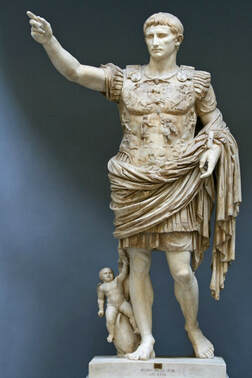 August was originally named Sextilis by the Romans, it was renamed August in honor of the first emporer of Rome, Augustus. "According to a Senatus consultum quoted by Macrobius, he chose this month because it was the time of several of his great triumphs, including the conquest of Egypt." August is the last of the summer months and is considered by many cultures to be the first of the month of the harvest. August 2016 was recorded as the hottest August ever since record keeping began in 1880. It broke its previous record set in 2014. Read the EPA report on how climate change will affect Las Vegas in the future. If you live in the USA, there is an EPA report for each state. Type "climate change epa + your state name” to see it. Some states put out there own reports which you might want to peruse as well. https://en.wikipedia.org/wiki/August - https://www.theatlantic.com/notes/2016/09/the-hottest-august-ever/499847/ https://19january2017snapshot.epa.gov/sites/production/files/2016-09/documents/climate-change-nv.pdf Photo: https://commons.wikimedia.org/wiki/File:Statue-Augustus.jpg August Lore If the first week in August is unusually warm, the coming Winter will be snowy and long. For every fog in August, There will be a snowfall in Winter. "Fairest of the months! Ripe summer's queen The hey-day of the year With robes that gleam with sunny sheen Sweet August doth appear." - R. Combe Miller http://www.gardendigest.com/monaug.htm Lughnasadh – Lammas - Gwyl Awst Monday, August 7, 2017 @ 0:40 AM Pacific  Lughnasadh is the Gaelic cross-quarter day that marks the beginning of the harvest. Its traditional date is Aug. 1 and the date of Aug. 7 above is the literal halfway mark between the June Solstice and the September Equinox for 2017. Early Irish literature relates to us that the festival is named after the Irish Tuatha Dé Danann god, Lugh, “…a sun god, a storm god or a sky god.” The festival is marked with rituals, feasting, athletic games, matchmaking and trading. Offerings of the 'first fruits' are still seen today in harvest festivals around the world. The games and feasts were funerary in honor of Lugh's mother, Tailtiu. One story tells that Tailtiu died of exhaustion after clearing the plains of Ireland for agriculture. The Saxons celebrated Lammas (hlaefmass - loaf mass), the harvesting of the grain. “The first sheaf of wheat is ceremonially reaped, threshed, milled and baked into a loaf. The grain dies so that the people might live. Eating this bread, the bread of the Gods, gives us life.” https://en.wikipedia.org/wiki/Lughnasadh - https://en.wikipedia.org/wiki/Lammas http://www.schooloftheseasons.com/lammas.html - Photo: https://commons.wikimedia.org/wiki/File:Tricephale_Carnavalet.jpg See the flowers and stones of August, ways to celebrate Lughnasadh, and more about the month of August and the holiday of Lughnasadh HERE! JULY 2017 NEWSLETTER Thank you for subscribing to Inner Circle Sanctuary's newsletter. Included is information about the month of July, links to our upcoming events sponsored by ICS, and how you can become a member. WELCOME TO INNER CIRCLE SANCTUARY'S JULY NEWSLETTER The highest and brightest day of the sun has passed, but we are in store for hotter weather because of the phenomenon called “The Lag of Seasons.” Like a pot of water put over a high flame, it still takes time for the water to reach its boiling point, as it will take the earth to feel the effects of the Midsummer sun. It’s the same reason why January and February are colder than December when Midwinter occurs. Here, in Las Vegas, for the past few weeks, our temperatures have already surpassed our historical highs for this time of year. Read the EPA report on how climate change will affect Las Vegas in the future. If you live in the USA, there is an EPA report for each state. Type "climate change epa + your state name” to see it. Some states put out there own reports which you might want to peruse as well. QUINTILIS The name of the month of July was changed from it’s original Quintilus via the Roman senate in 44BC to honor Julius Caesar after his brutal and untimely death. Similarily, the month of Sextilis was changed to honor Augustus, hence the name for the month of August. For those that know a little Latin, the terms Quintilis and Sextilis actually mean Five and Six, respectively. The Roman calendar, before Julius Caesar, only had ten months with the sixty days of winter, where there was no work in the fields, unaccounted for. The year began in March (Martius, "named after Mars, the Roman god of war, who was also regarded as a guardian of agriculture” and ended in December (decem, meaning ten). This original calendar was “determined by the cycles of the moon and the seasons of the agricultural year.” We get the name “calendar” from ‘kalends’: the first of the month which occurred on the New Moon. The ‘ides’, or mid-month, were the full moons. Read more about how our modern calendar came into being. http://penelope.uchicago.edu/~grout/encyclopaedia_romana/calendar/romancalendar.html https://en.wikipedia.org/wiki/Roman_calendar http://www.webexhibits.org/calendars/calendar-roman.html https://www.livescience.com/45650-calendar-history.html The Romans also gave us the names of the days of the week and anyone who has any romance language experience can see this. The names of the week are based on the Sun, Moon and the names of the five planets known to the Romans. While Saturday, Sunday, and Monday made it through to today’s modern English, the Anglo-Saxons replaced the other four with the names of their gods. dies is believed to be derived from the Latin “from the Gods” “Tuesday comes from Tiu, or Tiw, the Anglo-Saxon name for Tyr, the Norse god of war. Tyr was one of the sons of Odin, or Woden, the supreme deity after whom Wednesday was named. Similarly, Thursday originates from Thor's-day, named in honor of Thor, the god of thunder. Friday was derived from Frigg's-day, Frigg, the wife of Odin, representing love and beauty, in Norse mythology.” ~ Encyclopedia Britannica JULY LORE July third begins the “Dog Days of Summer” that last until August 11. At this time, the sun shares the same space as Sirius, the Dog Star. Legend says the Dog Star conspired with the sun to make the days hotter. Others believed the hot weather caused dogs to go mad. If the first of July be rainy weather, It will rain, more of less, for four weeks together. - John Ray, English Proverbs Hot July brings cooling showers, Apricots and gillyflowers. - Sara Coleridge, Pretty Lessons in Verse If ant hills are high in July, Winter will be snowy. JULY BIRTHSTONES RUBY Red has always been the color of fiery emotion, deep passion and fury. As a gemstone, the semi-transparent nature of this red, faceted stone seems to glow with an internal fire. Many cultures saw this stone as a“Stone of Kings”, in Sanskrit, it is known as Ratnaraj, “King of precious stones”. The Hindus believed that fine rubies offered to Krishna would ensure the givers rebirth as emperors and as such bring them peace, power, wealth and protection. The soldiers of the Burmese armies would install these stones in their flesh, granting them invincibility in battle. In the more modern day, the red fluorescence power of the ruby helped build the first working laser in 1960. Rubies are fine stones when used for work relating to passion and desire, as well as used in or worn for protection working. ONYX Long thought to be a stone that brought sadness and depression, mined in China, the workers would not “willingly touch or own this gem for fear of bad dreams, misfortune, and loss of energy”. Traditional Onyx is black in color with multi colored bands, usually of red, brown, orange and white. The bands are straight in true onyx, and can be easily confused with Agate. Onyx has long been used in jewelry; Romans used these in seals and in Victorian England, mostly used in cameos. The stone was prized for its subtle, somber nature and basic black beauty. The negativity surrounding the stone is mainly in the user’s mind and can be used handily for protection and where negativity has been directed at you. If you are fair to the advances of unwanted adoration or sexual advances, noted Wiccan Scott Cunningham, describes onyx as useful for temporarily dampening the sex drive or containing energy of any kind. JULY FLOWERS WATER LILY When you see a water lily, it’s hard not to conjure a dainty nymph dancing upon the water. Water Lily’s Latin classification is Nymphaeaceae (nim-fuh-see) inspired by the nymphs of mythology. Whether painted by Monet or serving as the national flower of Bangladesh (white) or Sri Lanka (blue), water lilies have represented rebirth, optimism, love, life, & creation. Throughout history and in several cultures, the Water Lily symbolizes many different things from healing to transmutation to passion to chastity. In magic, find the meaning you resonate with and utilize appropriately. LARKSPUR Larkspur has been memorialized in Greek myth as a memorial flower, as sky steps from heaven in Native American mythology, and as a patient bunny in Christian legend. For witches, larkspur is seen as a great protective ingredient for any spell regarding ‘Heroes’ like police, firemen, and soldiers or to honor them. Larkspur is said to protect against both corporeal (insects, pest invaders, etc) and non-corporeal beings (ghosts, malevolent spirits, etc.) when planted near the home or worn. JULY ZODIAC SIGNS Many of you will recognize some or all of these traits in the Cancers & Leos that come in and out of your lives. Some will have more of the positive traits and others will have more of the negative. If they are recognized, and if the person is willing, these tendencies can be changed. These prescriptions are not set in stone. And because of that, they are also, not an excuse for being a jerk. ~Atheona CANCER If you know someone born in July before the 22, their zodiac sign is Cancer, the crab. Traits for Cancer include: tenacity and/or stubbornness emotional and/or moody sympathetic and compassionate and/or hypersensitive persuasive and/or manipulative friendly, outgoing, and talkative and/or gossipy or uncommunicative Cancers are caretakers with great nurturing abilities who love and are loyal to their close friends and family. However, they don’t often reveal much of themselves. LEO If you know someone born in July on the 23rd or after, their zodiac sign is Leo, the Lion. Traits for Leos include: Confidence and/or arrogance ambitious and/or self-centered humorous and/or dramatic focused and/or inflexible competitive and/or a sore loser Leos are natural born leaders and love being the ‘king of the jungle’. However, if the accolades from being top boss suddenly dry up or turn, the disappointed roar of the Leo can be heard across the entire jungle. UPCOMING EVENTS WITH INNER CIRCLE SANCTUARY  Pagan Bread Making Demonstration &Tasting with ICS Saturday, July 15 at 6 PM - 9 PM Posts you may have missed from the event invite on Facebook: The Magic of Bagels The Tradition of Bread & Salt The Bread Man at Lammas Mark 'Going' or 'Interested' to get updates from the Facebook event invite
BLOG POSTS FROM INNER CIRCLE SANCTUARY YOU MAY HAVE MISSED Midsummer 2017 Newsletter Your Holy Day (Birthday) 3 Reasons To Have A Community Booth At Pagan Pride Day 7 Reasons To Be A Vendor at Pagan Pride Daniel's Magical Name How To Become a Member of Inner Circle Sanctuary Send us a message and we'll send you a few questions to start. Then, we'll make arrangements for a full interview, possibly two. Once the interview has been completed and discussed among the elders and you are accepted, your start date will be in a couple of weeks. http://www.innercirclesanctuary.com/1st-degree-classes.html If it has been a while since you've had classes with us, please contact us and we can assess where to go from there. http://www.innercirclesanctuary.com/2nd-degree-classes.html If you would like to attend a sabbat event, please send an inquiry and we will pair you with a current member to be your sponsor. Message us on Facebook Message us via Email Stay Tuned for Inner Circle Sanctuary's Lughnasadh & August Newsletter! ARTICLE CONTRIBUTIONS FROM:
Lord Rand Lady Gwendolyn SOURCES http://penelope.uchicago.edu/~grout/encyclopaedia_romana/calendar/romancalendar.html https://en.wikipedia.org/wiki/Roman_calendar http://www.webexhibits.org/calendars/calendar-roman.html https://www.livescience.com/45650-calendar-history.html http://www.livius.org/sources/content/plutarch/plutarchs-caesar/caesars-calendar-reform/ http://science.howstuffworks.com/science-vs-myth/everyday-myths/time5.htm https://19january2017snapshot.epa.gov/sites/production/files/2016-09/documents/climate-change-nv.pdf http://www.gia.edu http://www.americangemsociety.com http://www.witchipedia.com/herb:larkspur http://www.flowermeaning.com/larkspur-flower-meaning/ http://www.buzzle.com/articles/what-does-a-water-lily-symbolize.html http://wiccanbeauty.com/water-lily-a-beautiful-magical-water-flower-you-can-enjoy-as-a-fragrance-oil/ http://tesswhitehurst.com/the-magical-and-metaphysical-properties-of-flowers/ http://www.sacredwicca.com/language-of-flowers http://www.witchipedia.com/herb:water-lily#toc5 http://www.gemsociety.com http://www.jewelsforme.com https://en.wikipedia.org/wiki/Scott_Cunningham ‘The Crystal Bible: A definitive Guide to Crystals’ by Judy Hall Larkspur, Cunningham, Scott, Encyclopedia of Magical Herbs, Llewellyn Publications, Second Edition, 1984, 2016, page 152 PHOTOS https://en.wikipedia.org/wiki/Delphinium#/media/File:Delph_1.jpg http://www.yokota.af.mil/News/Article-Display/Article/941960/dog-days-of-summer/ https://www.flickr.com/photos/luigi_and_linda/5007629773 https://commons.wikimedia.org/wiki/File:Tyr-brakteaten_fr%C3%A5n_Naglum,_Trollh%C3%A4ttan_(SHM_1164)_tecknad.jpg https://commons.wikimedia.org/wiki/File:Del_av_hj%C3%A4lm_vendel_vendeltid_m%C3%B6jligen_oden.jpg https://commons.wikimedia.org/wiki/File:Thor,_siddende,_st%C3%B8ttet_til_sin_hammer.jpg https://commons.wikimedia.org/wiki/File:Frigga_in_Myths_of_Northern_Lands_by_H_A_Guerber.jpg https://commons.wikimedia.org/wiki/File:Hot_August_Dog_In_Pool.jpg https://commons.wikimedia.org/wiki/File:Natural_History_Museum_-_Corundum_(white_marble_with_ruby),_Burma.jpg http://viola.bz/ancient-arts-of-glyptics/ https://en.wikipedia.org/wiki/Nymphaeaceae#/media/File:Victoria_cruziana_flower.jpg https://www.horoscopedates.com/zodiac-signs/cancer/ https://www.horoscopedates.com/zodiac-signs/leo/ Midsummer - Summer Solstice |
Isn't the Summer Solstice
the 'Beginning' of Summer?
If we were to actually begin the seasons with the cross-quarter days of
Imbolg, the very beginning of spring,
Bealtaine, the very beginning of Summer.
Lughnasadh, the very beginning of the Autumn harvesting season, and
Samhain, the early beginning of Winter
then it's easy to see why the Summer Solstice is known as "Midsummer". (and why Yule is oft called "Midwinter".)
LITHA
 Venerable Bede
Venerable Bede Ancient Celebrations of the Solstice
- "In ancient China, the summer solstice was observed by a ceremony to celebrate the Earth, femininity, and the “yin” forces."
- "In ancient Gaul, the Midsummer celebration was called Feast of Epona.
- "Some Native American tribes held ritual dances to honor the Sun.
- "For the Greeks, it would, according to some calendars, mark the start of the new year and the month-long countdown toward the Olympics.
- "For the Romans, the solstice was the occasion for another unique exception to everyday life: on the first day of the festival of Vestalia, married women could, for one day only, enter the temples of the vestal virgins to make offerings to Vesta, goddess of the hearth and home.
- "Mayas and Aztecs used the day as a marker by which to build many of their central structures, so that the buildings would align perfectly with the shadows of the two solstices, summer and winter.
- "In Jewish tradition, it’s known as Tekufat Tammuz, the solstice of the month Tammuz.
- "Eastern Europe celebrates the solstice with Kupala, a Slavic holiday with pagan roots. Named for the Slavic goddess Kupala, it was originally conceived as a fertility rite.
- "Throughout Austria (and especially in the mountains of the Wilder Kaiser region of Tyrol), fires dot the countryside to celebrate the solstice."
How You Can Celebrate Midsummer
- Honor the longest day of the year. Wake at dawn. Stay up the entire day & night to greet the next day's sunrise.
- Celebrate the power of the sun. Light candles specifically for the Sun when indoors or host a get-together around a bonfire.
- Have a Midsummer's Night Bonfire Ritual. Include a barbecue feast to follow. Don't forget the Goddess! Supply a kiddie pool, squirt guns, water balloons and other water features.
- Celebrate Fathers: Litha falls near Father's Day, so take some time and honor dads and the sacred masculine.
- Use the day to recharge your magical tools by the light of the sun and the glow of the moon.
- Attune with the God of the Green. Visit a nearby forest. Hike a trail. Meditate about and ground with your surroundings.
- Head to the beach to soak in the heat of the Sun God but remember to cool off with the Ocean Goddess. Spend the evening there as well, with a bonfire to fight the chill coming off the water.
- Light your bonfire by drawing down the sun and use a bit of the flame to light a brand new everlasting altar candle or lamp.
Midsummer Folklore & Magic
- Jumping a bonfire safely would guarantee good luck for the coming year.
- Make an amulet of protection from the ashes of your Midsummer bonfire.
- Create a stone circle and sit up all night on Midsummer's eve to see the fae. Carry rue in your pocket for protection or turn your jacket inside out to confuse them.
- Whisper a wish to a pebble, circle the Midsummer bonfire three times and then toss the stone in to fulfill your wish.
- Write your prayer (wish) on a paper boat, fill it with flowers, set it on fire, and let the boat travel down a stream.
- Raise a tall, leafy Maypole to dance around.
Sun Gods
Freyr - Huitzilopochtli - Lugh - Hvar Khshaita -
Inti - Liza - Mithras - Sol Invictus -
Surya - Tonatiuh - Utu (Shamash)
Latest Blog Posts from
Inner Circle Sanctuary
Bealtaine 2017
June 2017 Newsletter
Origins of Inner Circle Sanctuary
The Pentagram for Inner Circle Sanctuary
Upcoming Events with
Inner Circle Sanctuary
Aug 19 - What You Need To Know About Tarot
Sep 9 - My So Called Magical Life
Oct 21 - Samhain: Winter Has Come
https://en.wikipedia.org/wiki/Midsummer
https://blogs.scientificamerican.com/literally-psyched/why-we-celebrate-the-summer-solstice/
https://en.wikipedia.org/wiki/The_Reckoning_of_Time
https://en.wikipedia.org/wiki/Bede
http://www.tandfonline.com/doi/pdf/10.1080/00155870802352178
Photo credits:
Globe Photo from http://www.michaelquinton.org/summer-solstice.html
Epona ~ The Celtic Horse Goddess By Emily Balivet, 2009 http://www.emilybalivet.com/Epona.html
Vestal Virgin by Jean Raoux (1677–1734) https://commons.wikimedia.org/wiki/File:Jean_Raoux_-_Vestal_Virgin_-_WGA18999.jpg
Kupala (aka Festivities on Midsummer Night) by Wojciech Gerson (1831–1901) https://commons.wikimedia.org/wiki/File:Gerson-Kupala.jpg
Osterfeuer TK on the beach of Binz, Rügen island, Germany by Tom Küpper
https://de.wikipedia.org/wiki/Datei:Osterfeuer_TK.jpg
The God Face Surreal by Kyle Pearce
https://www.flickr.com/photos/keepitsurreal/1794450683
'Fairy Islands' from the book Elves and Fairies 1916 by Ida Rentoul Outhwaite
https://commons.wikimedia.org/wiki/File:%27Fairy_Islands%27_from_the_book_Elves_and_Fairies_1916_by_Ida_Rentoul_Outhwaite.jpg
Ra aboard the Atet, his solar barge
https://en.wikipedia.org/wiki/Solar_deity#/media/File:Ra_Barque.jpg
Apollo in his chariot with the hours by John Singer Sargent Museum of Fine Arts
http://www.mfa.org/collections/publications/john-singer-sargent-murals-museum-fine-arts-boston
Copyright © 2017 Inner Circle Sanctuary, All rights reserved.
INNER CIRCLE SANCTUARY'S
JUNE NEWSLETTER
Juno is often depicted wearing a crown, carrying a scepter, and accompanied by a peacock. Her husband Jupiter had fallen for a young woman named Io and to hide her from Hera, he transformed her into a cow. Hera captured Io and set her servant, Argus, to keep an eye on her. The task would be easy for Argus because he had a hundred eyes, which only a few were shut at one time. Unfortunately, Ju[iter sought out Mercury to help retrieve Io from the giant. After many long, winsome tales and lulling the giant to sleep, Mercury beheaded the giant. Juno was saddened by the loss of her servant so she gathered up his one hundred eyes and scattered them over the tail of her favorite bird, the peacock.
Pearls were believed to be the tears of mythical creatures like the mermaid and nymphs; the treasures of dragons; and tears from the moon herself. Highly associated with the moon, pearls are considered feminine associated with nurturing, healing, happiness, innocence, honesty and integrity. They can be used in magic for relationships and commitments or can be worn to heighten intuition and imagination.
By the magic of science, Alexandrite is a color changing gem. In daylight it is a bluish-mossy green color and under lamplight it flashes a warm raspberry color. Alexandrite is believed to help bring a sense of calm and a peaceful state of mind to the wearer. It can attract joy, prosperity, good luck for gamblers, and boosts creativity and magnetism.
Ancient Romans considered the moonstone to be the solidified light of the moon herself. Wear to attune yourself to the natural rhythms of the moon, to attract true love, to enhance fertility, to settle disagreements in a relationship, and to arouse passions. Moonstone is also said to bring wonderful dreams at night.
Roses have been in gardens for over 5000 years. It is said that the foam that dripped from the freshly born Aphrodite as she emerged from the sea turned into white roses and when she mourned over the body of Adonis, her tears turned the white roses red. Roses are highly prized for all love magic. Roses bring peace, love, and are empowering to the spirit.
Since ancient time honeysuckle has been burned for prosperity within the home. It is also used in love magic and to induce dreams of love and passion. With its ability to cling to walls, honeysuckle is also known as ‘love bind’ and is symbolic of devotion.
their zodiac sign is either Gemini or Cancer.
If someone is born before June 20th, their zodiac sign is Gemini. Traits for the Gemini are adventurous, have a love of variety, are charming, sociable, and quick-witted although, on occasion they can be talkative or bitingly sarcastic. Gemini’s are very independent yet can sometime throw caution to the wind. They are intelligent, adaptable, and confident yet can be unemotional, devious, and tend to take their own path.
If someone is born on or after June 21, they are a Cancer. Traits for Cancers include loving, loyal, and intuitive yet can be overemotional, clingy, and overly sensitive. They are self-motivated, natural leaders, and practical yet can side on controlling, bossy, or pessimistic. Cancers love helping others although can have a hard time trusting others. They love feeling secure but can tend to overreach on occasion. Cancers really enjoy the people they care about but aren’t fond of change.
Join Inner Circle Sanctuary for an
Introduction To Our Coven
On Saturday, June 10 from 6pm to 9pm, we return to our roots.
If you are curious about who we are and how we operate OR if you are interested in petitioning to join our Wicca group and classes;
Come Join Us.
Subjects we will cover:
The history of Inner Circle Sanctuary
How ICS has evolved over the years
What is Wicca
What we teach
The magical name
The magical tools needed to start classes
Our textbooks
How to become a member/student
What we offer as a group
What we expect from a member/student
What to expect if you are accepted as a member/student
And as an added bonus, we will demonstrate our basic ritual ring.
http://www.innercirclesanctuary.com/updates-and-info/inner-circle-sanctuary-intro
https://www.facebook.com/events/1807419629475587/
Midsummer Newsletter!
Inner Circle Sanctuary
Inner Circle Sanctuary is a school for traditional style Wicca and holds eight sabbat festivals every year.
Categories
All
2021
2022
2023
2024
Aleister Crowley
Alexandrite
Alex Sanders
Altar
Amethyst
Ancestors
Apotheosis
Asters
Astrology
Athame
Audio
August
Aurum Solis
Author
Autumn Equinox
Bacchus
Bealtaine
Bell Book And Candle
Beltane
Birthday
Birthstone
Book Of Shadows
Book Review
Books
Bread
Brighid's Cross
Calendula
Cancer
Candace Ross
Candle Magic
Candlemas
Censer
Chalice
Charity
Charles Godfrey Leland
Christmas
Classes
Cleansing
Corn Dollies
Coven
Covid 19
Covid-19
Crafting
Crystals
Cup
Days Of The Week
Demeter
Dionysus
Divination
Dorothy Eady
Ed Fitch
Egyptian
Equilux
Equinox
Erin Lale
Esbat
Event
Events
Familiars
February
Fertility
Fiction
Flowers
Forget-Me-Nots
Founder
Full Moon
Gatekeeping
Gemini
Gems
George Pickingill
Gerald Gardner
Gnosis
God
Goddess
Golden Dawn
Graphology
Halloween
Harmony Nice
Heathen
High Priestess
History
Honeysuckle
House Plants
Imbolc
Imbolg
Incense
Indoor Plants
Inner Circle Sanctuary
Interview
Israel Regardie
Janet Farrar
John Dee
July
June
Juno
Kemetism
Kitchen Witch
Lady Anwyn
Lady Bhen Rudha
Lady Joyanna
Lady Morgana
Lady Sheba
Lady Sistterwolf
Lammas
Larkspur
Las Vegas
Las Vegas Thelemic Community
LBRP
Lecture
Leo
Library
Litha
Lord Mordred
Lord Tanys
Lucifer
Lughnasadh
LVCCLD
LVNHM
Mabon
Magic
Magickal Plants
Magickal Stones
Magickal Tools
Magickal Tool;s
Maiden
March
Matt Whealton
May
Mercury
Midsummer
Monthly Lore
Moonstone
Moon Water
Morning Glories
Movie Review
Mystic Fair
New Moon
Newsletter
November
October
Onyx
Opal
Ostara
Ouija
Pagan
Paganism
Pagan Pride Las Vegas Project
Palmistry
Palm Reading
Patricia Crowther
Pearl
Pentacle
Pentagram
Poem
Pop Culture
Psychic
Publicity
Q & A
Questionnaire
Raymond Buckland
Ritual
Robert Cochrane
Rose
Ruby
Runes
Sabbat
Samhain
Sapphire
Scott Cunningham
Scourge
Sekhmet
Selena Fox
September
Shop
Spell
Spell Bag
Spring Equinox
Spring Queen
Starhawk
Stewart Farrar
Stones
Story
Summer Solstice
Summoner
Sun
Super Moon
Sword
Tarostar
Tarot
Temple Of Sekhmet
Temple Of The
Temple Of The Inner Circle
Thanksgiving
Thelema
Thorn Mooney
Unitarian Universalist Congregation Of Las Vegas
Veterans
Victor Henry Anderson
Video
Wand
Water Lily
Wheel Of The Year
Wicca
Wicca Class
Wine
Winter Solstice
Witchcraft
Yule
Yule Log
Archives
July 2024
June 2024
May 2024
April 2024
March 2024
February 2024
January 2024
December 2023
November 2023
October 2023
July 2023
May 2023
April 2023
March 2023
February 2023
January 2023
November 2022
August 2022
July 2022
June 2022
May 2022
April 2022
March 2022
February 2022
January 2022
July 2021
April 2021
March 2021
February 2021
January 2021
December 2020
November 2020
October 2020
August 2020
July 2020
June 2020
May 2020
March 2020
February 2020
January 2020
December 2019
November 2019
October 2019
September 2019
August 2019
July 2019
June 2019
May 2019
April 2019
March 2019
February 2019
January 2019
December 2018
October 2018
August 2018
June 2018
May 2018
April 2018
March 2018
January 2018
December 2017
November 2017
October 2017
September 2017
August 2017
July 2017
June 2017
April 2017
February 2017
January 2017
December 2016
November 2016
October 2016
July 2016
June 2016
May 2016
April 2016
February 2016
December 2015
November 2015
October 2015
September 2015
August 2015
July 2015
April 2015
March 2015
February 2015
January 2015
|
Inner Circle Sanctuary
An Eclectic Traditionalist Oath-bound, Initiatory Wiccan Coven |
|







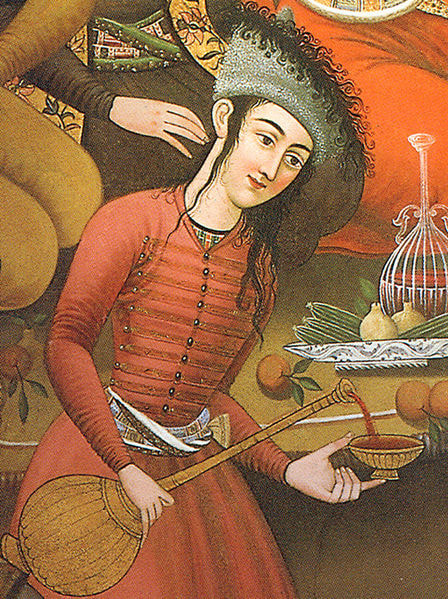














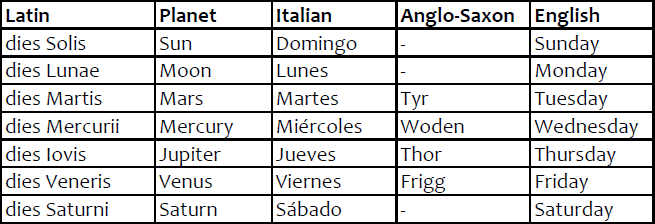


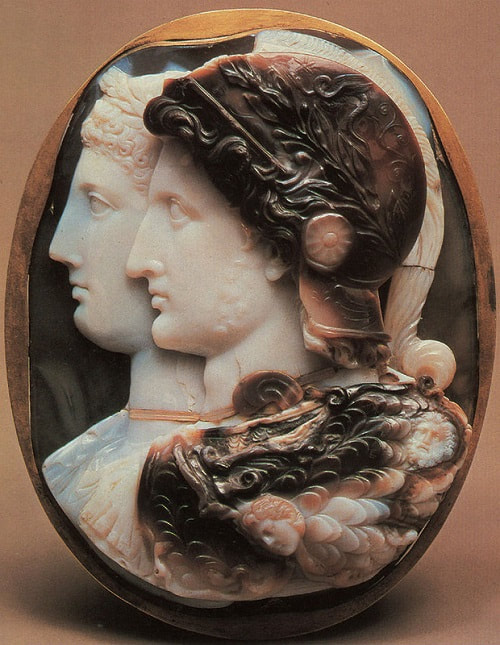
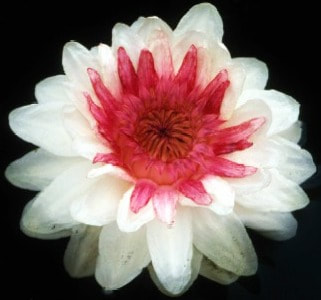
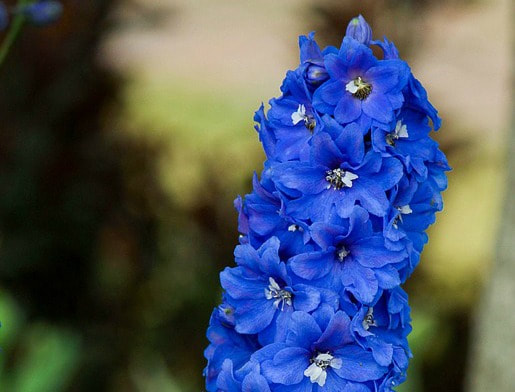











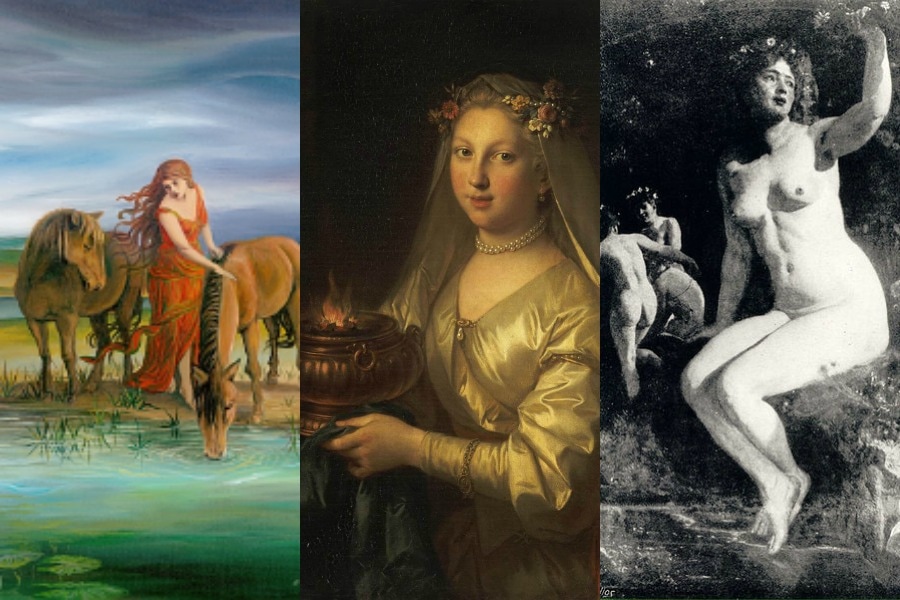











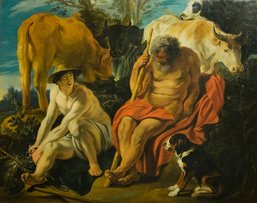





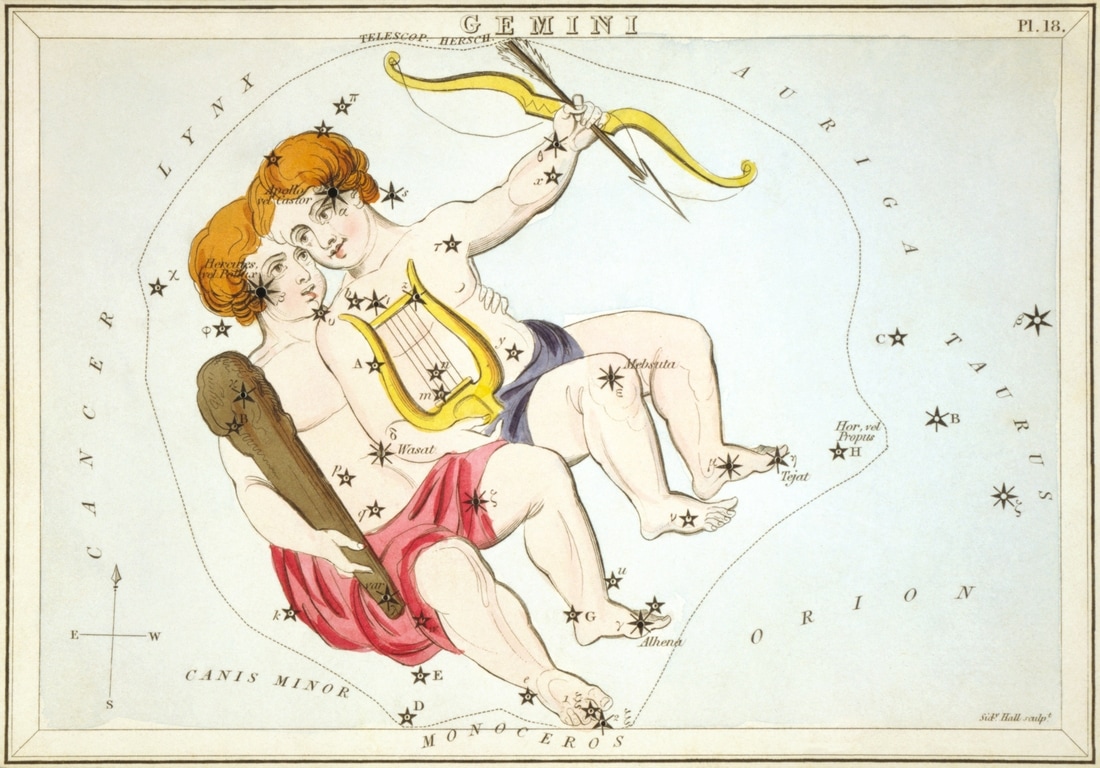


 RSS Feed
RSS Feed
